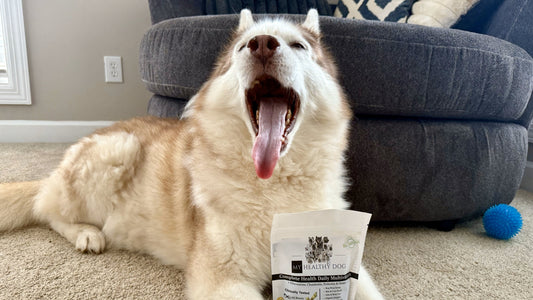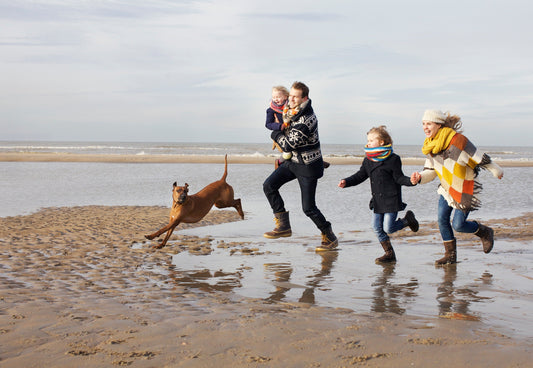The Chesapeake Bay Retriever, affectionately known as the Chessie, is a robust, resilient breed celebrated for its prowess in waterfowl retrieval. Originating along the Chesapeake Bay in the United States, this breed is as much a part of American hunting culture as it is a beloved family companion. This article explores the rich history, characteristics, and care of the Chesapeake Bay Retriever, offering an in-depth look for prospective owners.
Breed Summary
Country of Origin: Chesapeake Bay
AKC Breed Popularity: Ranks 45 of 196
AKC Classification: Sporting Group
UKC Classification: Gun dog
Exercise Requirements: 20-40 minutes/day
Height: Female: 21-24 inches; Male: 23-26 inches
Weight: Female: 55-70 lbs.; Male: 65-80 lbs.
Physical traits: Strong, Muscular, Well-balanced
Coat: Length: Short
Characteristics: Thick
Colors: Light Brown, Dark Brown, Deadgrass, Tan, Brown, Sedge
Overall Grooming Needs: Moderate
Personality traits/Temperament: Affectionate, Bright, Sensitive
Energy Level: Average
Tendency to Drool: High
Tendency to Snore: Low
Tendency to Bark: High
Tendency to Dig: Low
Social/Attention Needs: Moderate
Life Expectancy: 10-13 years.
Origin of the Chesapeake Bay Retriever
The Chesapeake Bay Retriever's story begins in the 19th century, stemming from two Newfoundland puppies who were rescued from a shipwreck off the coast of Maryland. These puppies were bred with local retrievers, including the English Otterhound and the Flat-Coated Retriever, resulting in a breed highly skilled in water retrieval. The Chessie was specifically developed to endure the harsh, icy waters of the Chesapeake Bay, making them unparalleled duck hunters.
Appearance
Chessies are sturdy, medium to large dogs, with males typically standing 23 to 26 inches tall and females 21 to 24 inches. They weigh between 65 to 80 pounds, showcasing a muscular build ideal for their role as water retrievers. Their most distinctive feature is their dense, waterproof coat which comes in various shades of brown, sedge, and deadgrass, designed to camouflage them in their natural marshy habitat. Their bright, intelligent eyes range from yellowish to amber, reflecting their keen and alert nature.
Temperament
Chesapeake Bay Retrievers are known for their courageous and tenacious temperament. They are fiercely loyal to their families, often forming a strong bond with one particular member. While they are affectionate and protective, Chessies can be reserved with strangers and may exhibit dominance if not properly trained. Early socialization and obedience training are crucial to develop a well-rounded dog.
Health Outlook
Chessies are generally healthy, with a life expectancy of 10 to 13 years. They are prone to certain genetic conditions, such as hip and elbow dysplasia, Progressive Retinal Atrophy (PRA), and bloat. Regular veterinary check-ups are essential. Their thick coat can sometimes lead to skin conditions like hot spots or allergies, making regular grooming and bathing with a premium dog shampoo beneficial to maintain skin health and coat quality.
Nutritional Requirements
The nutritional needs of a Chesapeake Bay Retriever are crucial for maintaining their active lifestyle. A diet rich in high-quality proteins and fats supports their energy levels, particularly during hunting or training sessions. Including a complete healthy multivitamin can ensure they receive all essential nutrients, particularly for maintaining joint health and overall vitality.
Exercise Requirement
As a breed built for activity, Chesapeake Bay Retrievers require substantial daily exercise. Activities such as swimming, retrieving, and jogging are ideal to keep them physically and mentally stimulated. They excel in dog sports like agility, obedience, and field trials, which also satisfy their need for work.
Pros and Cons of Owning the Breed
Pros:
- Excellent hunting dogs with a great love for water.
- Loyal and protective, making them good family pets.
- Hardworking and reliable with a high level of endurance.
Cons:
- Can be willful and stubborn, requiring an experienced owner.
- Potential for aggression if not properly trained.
- High exercise needs, not suited for inactive lifestyles.
Space Requirements
Chessies do best in homes where they have plenty of space to move and exercise. While they can adapt to various living conditions, a house with a yard is ideal. They are not suited to apartment living unless their exercise needs can be fully met through other means.
Suitability for Elderly
Due to their high energy and strength, Chesapeake Bay Retrievers are not typically recommended for elderly owners unless they are very active and experienced in handling large, energetic dogs.
Suitability for Kids
Chessies are good with children, especially when raised with them from puppyhood. However, due to their size and exuberance, supervision is advisable during interactions with younger children.
Cost
The cost of a Chesapeake Bay Retriever puppy typically ranges from $800 to $1,500, depending on the breeder's reputation and the pedigree of the puppy.
What Should the Owner Be Like?
An ideal owner for a Chesapeake Bay Retriever should be active, patient, and experienced. They should be committed to providing regular, vigorous exercise and ongoing training.
Fun Facts
- The Chesapeake Bay Retriever has been Maryland's official state dog since 1964.
- Unlike most other retrievers, Chessies often prefer to retrieve one bird at a time, a trait that was selectively bred for to suit the rough conditions of duck hunting on the Chesapeake Bay.
Conclusion
The Chesapeake Bay Retriever is a devoted, robust companion with a work ethic that is unrivaled in the retriever world. For those who can meet their needs for exercise, leadership, and companionship, the Chessie is a loyal and capable breed that excels both in the field and as a family member.
Are you familiar with the Chesapeake Bay Retriever or have this wonderful breed in your family?
Share your stories in the comments!
Share the Article with friends!





